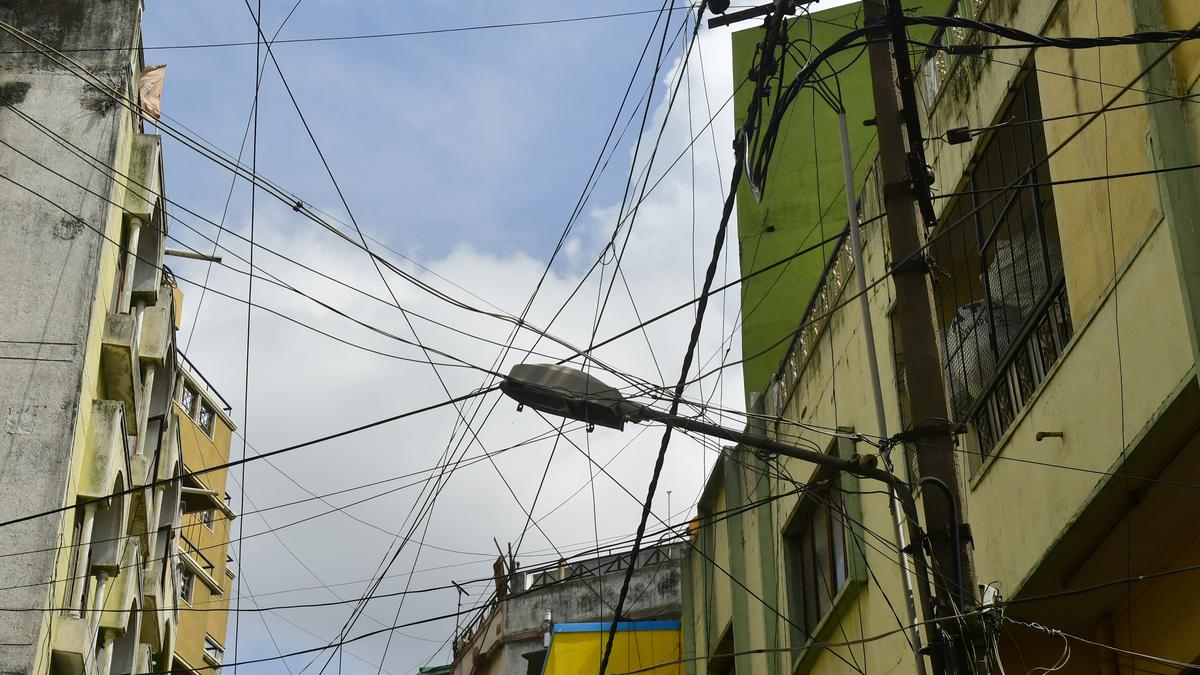
Surging electrical accidents in Bengaluru
The Hindu
Soundharya and her baby tragically died in an electrical accident in Bengaluru. 607 fatal electrical accidents have occurred in the city in the past 5 years, with 35 of them being departmental. Animals have also been victims of these accidents. Rapid, unplanned development and construction are the main causes of these accidents. The Karnataka Electricity Regulatory Commission has remained silent on the issue. Legal services are not available for victims and the KERC should take action to reduce accidents.
On November 19, after celebrating Deepavali in Tamil Nadu, 23-year-old Soundharya and her nine-month-old daughter Suviksha returned to India’s IT capital, Bengaluru, along with her husband Santosh Kumar. After deboarding a bus at Silk Board junction, the family took a bus to Hope Farm junction in the city’s eastern part.
What followed were moments of horror. The young mother and her baby were charred to death on the footpath they were walking on. They had stepped on a live electrical conductor that had snapped. Kumar, who tried to save his wife and daughter, also suffered an electric shock. The tragic accident caused an uproar in the city, with the public and political leaders from the Opposition demanding swift action and accountability.
However, this was not an isolated incident. According to statistics shared by the Bangalore Electricity Supply Company (Bescom), which has jurisdiction over eight districts, including Karnataka’s capital, between the financial years 2018-19 and 2023-24 (until October), there have been 607 fatal electrical accidents. While 572 of them were non-departmental (members of the public), 35 of them were departmental. Apart from this, there were also 203 non-fatal, non-departmental accidents, and 168 non-fatal departmental accidents in these five years.
In January this year, Gautham, a 26-year-old Bescom lineman, died of electrocution while repairing the F-29 feeder on Magadi Road. In September 2022, another 23-year-old woman, Akhila, who was also the breadwinner of her family, died from electrocution in Varthur after falling on an advertisement hoarding on the divider of a flooded road on a rainy evening.
“There is no way to walk on the footpaths in the city now without worrying about your safety. There are so many wires either dangling from poles or bunched up on one side of the footpath. How can people distinguish which one is a live wire and which one is an optical fibre cable, especially when they are walking around at night? My mother has now stopped walking on footpaths for this reason,” said Kiran Kumar, a resident of Haralur.
According to experts, 400 to 600 electrical fatalities occur every year across Karnataka. Apart from snapped conductors, the other common electrical hazards include building fires due to short circuits, flammable items placed near switchboards or electric panels, improper earthing, and electricity leakage.
A former officer of the Electrical Inspectorate spoke of how, in the last 10-15 years, electrical accidents have increased in rural areas due to haphazard drawing of cables, among other things. “For example, for the Niranthara Jyothi scheme (which aims to ensure 24-hour uninterrupted power supply in rural areas), they have drawn new lines along the old lines, causing interference. When lines pass too close to each other and come into contact, it might result in sparks and subsequently in the snapping of conductors, which causes accidents,” he explained. He added that the victims of such accidents are usually labourers who work with contractors.













